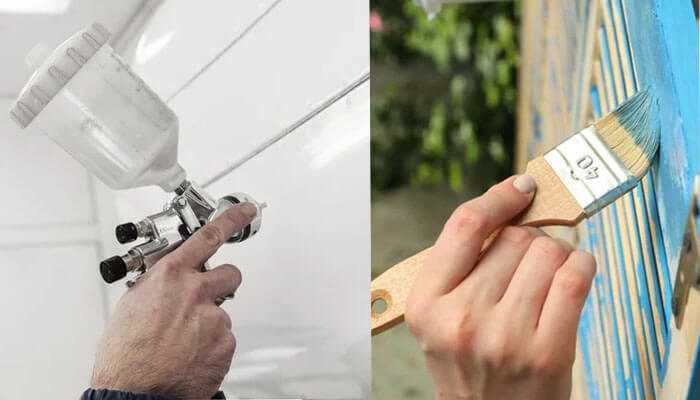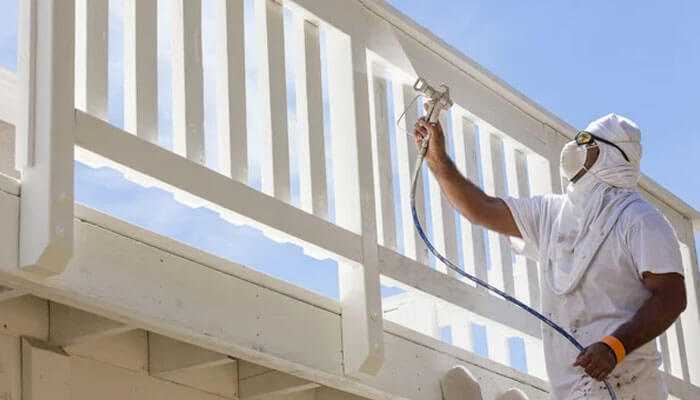When it comes to transforming your living space or enhancing your home’s exterior, the choice between spray painting and brush painting can significantly influence the final result. Like many homeowners worldwide, Auckland residents face this decision when embarking on painting projects. The unique climate and architectural styles in Auckland can make the choice even more crucial, requiring careful consideration of the pros and cons associated with each method.
With its diverse neighborhoods and stunning landscapes, Auckland demands painting techniques that cater to the specific needs of its homes. Whether you’re revitalizing a heritage villa in Ponsonby or giving a modern touch to a property in Remuera, the choice between spray painting and brush painting is integral to achieving the desired aesthetic and durability. In the vibrant city of sails, where attention to detail is paramount, finding trusted Auckland house painters becomes crucial.
Spray Painting: Speed and Efficiency
One notable advantage of spray painting is its speed and efficiency. Utilizing a spray gun allows for coverage of large surfaces, resulting in time savings compared to traditional brush painting methods. This makes spray painting a good choice for projects involving areas such as walls or fences.
Beyond speed, spray painting provides a smooth and even finish that is challenging to achieve with brushes. The fine mist of paint particles ensures coating without any brushstrokes or unevenness. This proves advantageous for tasks demanding flawless outcomes, like finishes or intricate trim work.
However, it’s important to acknowledge the downsides associated with spray painting.
One significant disadvantage is the issue of overspray, which refers to the dispersion of paint particles beyond the desired target area. If proper precautions are not taken to safeguard surrounding surfaces, overspray can result in paint specks on furniture or nearby objects. Hence, it becomes crucial to cover and mask these areas when opting for spray painting.
Brush Painting: Precision and Control
Brush painting has been a method for centuries due to its ability to provide precision and control during application. With a brush in hand, painters have flexibility in reaching corners or edges that might be challenging with a sprayer. This makes brush painting a choice for details or smaller projects where precision is of utmost importance.
Although surfaces painted with brushes may not have as flawless a finish as those done with a sprayer, some individuals appreciate the variations and texture that come from brush strokes. This can add a touch and character particularly sought after in handcrafted pieces or artistic endeavors.
When using brushes, it’s vital to select the type and quality for your project. The quality of the bristles and their material (natural or synthetic) directly impact the outcome of your painting. Investing in high-quality brushes will not only enhance control but also ensure longevity, enabling you to undertake future projects without compromising application quality.
That being said, there are some drawbacks to brush painting. It can be quite time-consuming, especially when working on surfaces. Achieving a finish may require applying coats, which means more labor compared to spray painting. Additionally, brushstrokes are more noticeable with this technique. Whether that aligns with your preferences is a personal consideration.
Making Your Decision
Ultimately, choosing between spray painting and brush painting depends on preference and the specific requirements of your project. It’s important to take into account factors such as surface size, desired finish quality, time limitations, and level of detail before making a decision. For surfaces like walls or fences where speed and flawless results are essential, spray paint might be the best choice. However, it’s crucial to protect surrounding areas from overspray using masking techniques.
Suppose precision and control are your priorities while also desiring variations in texture or a handcrafted feel for smaller projects or detailed work. In that case, brush painting is the way to go.
Remember that the decision between spray painting and brush painting extends beyond weighing the pros and cons. Your skill level and experience with each technique should also be considered. Spray painting may seem like an easy process; just squeeze the trigger and aim. However, controlling the application and achieving the desired outcomes takes practice. On the other hand, using a brush for painting offers precision, although mastering various brush techniques requires time and effort.
When deciding what you need for your painting project, considerations regarding budget are crucial as well. Spray equipment can be quite expensive, especially when looking for quality, professional-grade options. Moreover, spraying tends to use up more paint than brushing due to overspray. If you’re on a budget or have resources, brush painting may be a more cost-effective alternative.
Environmental impact should not be overlooked either. Spray painting releases compounds (VOCs) into the air, which can contribute to pollution and pose health risks if proper precautions are not taken. Opting for VOC paints or choosing brush painting helps address this concern.
In some scenarios, combining both techniques can deliver outcomes. Many skilled painters employ a mix of spray paint for areas, followed by brushwork to refine details and ensure even coverage. This hybrid approach allows them to leverage the advantages of each technique while minimizing any drawbacks.
It is important to note that these recommendations mainly focus on home improvement projects such as walls, furniture, cabinets, fences, and more. However, these techniques can also be applied in situations where they excel. For instance, spray paint provides coverage on surfaces like stucco or popcorn ceilings, while brushes are excellent for applying varnishes or stains as they allow better control over direction and saturation levels, enhancing the woodgrain features.
In conclusion, the choice between spray painting and brush painting depends on factors such as the size of the surface, desired finish quality, time constraints, skill level, budget considerations, and environmental awareness. By considering the advantages and disadvantages discussed above, you can determine which technique best suits your painting needs.



